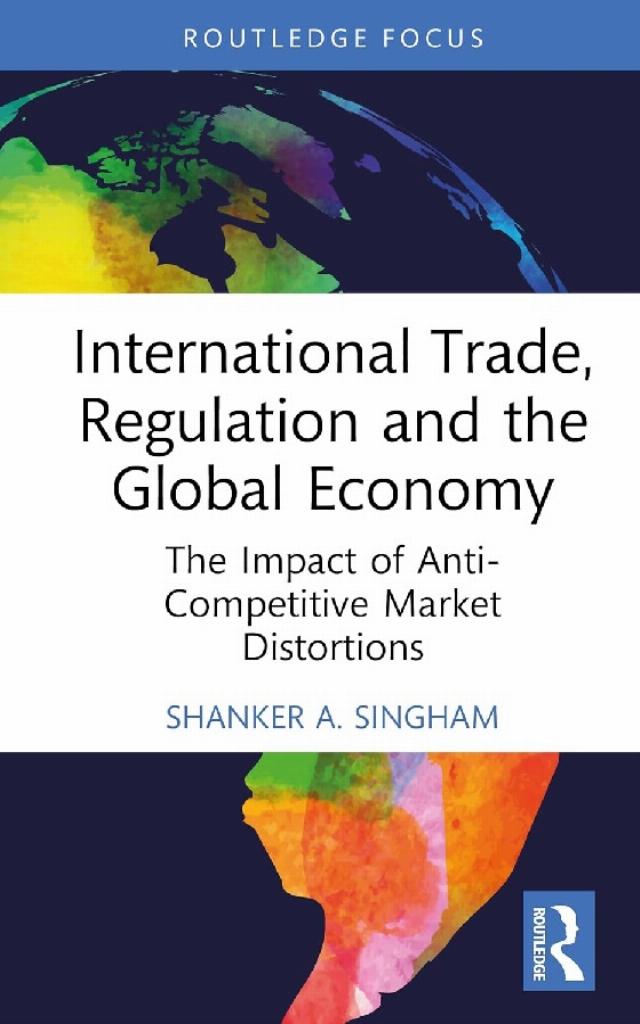America First and Our Economic Future
Upon returning to office, President Trump wasted no time before pursuing his “America First” agenda of pro-growth tax cuts, sweeping deregulation, institutional deconstruction, and aggressive tariff policy. Having had a modest hand in the development of those policies from my perch at the America First Policy Institute, I can attest that the president’s policies are largely, and correctly, designed to remove or mitigate barriers to wealth creation and prosperity.
Enter Shanker Singham. Singham’s recently published book, International Trade, Regulation and the Global Economy: The Impact of Anti-Competitive Market Distortions, shines a light on the damaging effects of anti-competitive market distortions (ACMDs) on American and global wealth creation. Tackling those distortions is at the core of Trump’s economic agenda.
Whether or not President Trump realizes it, he is preaching from the “Book of Singham.” The president’s policies largely reflect Singham’s diagnosis of the problem and, more importantly, echo his prescription for how to reignite economic growth.
In other words, Singham’s new book explains why President Trump’s America First agenda is so vital to America’s economic future.
While U.S. policymakers have traditionally focused on reducing tariff barriers, Singham shows that the greatest barrier to economic growth today is regulatory interference that distorts domestic competition. President Trump’s issuance of Executive Order 14192 -- the “Unleashing Prosperity Through Deregulation” order -- demonstrates that he understands this.
The Trump administration’s deregulatory efforts are well underway. According to the American Action Forum, the Trump administration has already set into motion efforts that will reduce the U.S. regulatory burden by roughly $800 billion annually. And that’s only the start!
Unleashing competition, as President Trump seeks to do, is vital to American prosperity. Consequently, Singham explains in great detail how these insidious distortions have, for decades, severely dampened wealth creation.
 Indeed, federal and state regulations governing energy production, the environment, labor, and seemingly every aspect of economic life make Americans poorer than they would be otherwise. Singham’s book details the negative effects of those regulations and gives ample justification to the Trump administration’s efforts to undo the substantial regulatory damage inflicted by previous misguided administrations. America’s trading partners should use this newfound channel to express their concerns with ACMDs in the U.S.
Indeed, federal and state regulations governing energy production, the environment, labor, and seemingly every aspect of economic life make Americans poorer than they would be otherwise. Singham’s book details the negative effects of those regulations and gives ample justification to the Trump administration’s efforts to undo the substantial regulatory damage inflicted by previous misguided administrations. America’s trading partners should use this newfound channel to express their concerns with ACMDs in the U.S.
Singham’s research quantitatively shows how non-tariff ACMDs have a threefold greater impact on wealth creation than tariffs and other border barriers. He demonstrates how the growth of anti-competitive policies in recent decades led to increases of these distortions and resulted in significant losses in potential GDP per capita.
Nonetheless, barriers to international competition also stifle economic growth. Ironically, Singham touts the efficacy of using aggressive tariff policies to pressure countries to lower their tariff and non-tariff trade barriers, given that efforts to achieve this over the last thirty years have comprehensively failed. That’s certainly consistent with the emerging Trump Tariff Doctrine.
A Trump strategy that would succeed in lowering ACMDs uses access to the U.S. market to lower tariffs and non-tariff barriers in other countries. Because many of these barriers affect all countries (such as regulatory distortions), elimination of them actually helps all countries. That is perhaps the reason that USTR, Jamieson Greer has referred to this as a new Trump trade round. Essentially, the administration is going back to much earlier trade rounds, and seeking to now put ACMDs at the center of future negotiations. Trump is asking the global trading system to take a few reverse steps in order to go forward faster.
President Trump is using tariffs in unprecedented ways. As such, countries are suddenly and uncharacteristically agreeing to negotiate matters that were once considered nonnegotiable. Vietnam has, for example, accepted the principle that transshipped goods will have a much higher tariff than goods of Vietnamese origin. This is an implicit recognition by Vietnam that violations of rules of origin are ACMDs. Korea has just suggested it will not go forward with aggressive and immensely damaging digital regulation.
In short, countries that want to spur economic growth would be wise to 1) dismantle laws and regulations that distort domestic competition and 2) abolish tariff and non-tariff barriers that distort international competition. Singham estimates that, if the United States were to do these things, U.S. per capita GDP would jump by 31 percent over ten years, wiping out the budget deficit. The UK, whose debt-to-GDP ratio makes economic growth a vital prerequisite to survival, could learn from this approach.
The key to Singham’s solution is his commitment to the knowledge that markets work best when they are free from distortion. Too often, governments intervene in markets to support incumbent interests at the expense of efficiency, innovation, and growth. If countries want to grow their economies and lower their unsustainable deficits, they need to follow his playbook.
James Carter is a Principal with Navigators Global. He previously oversaw the US Department of Labor’s international portfolio as deputy undersecretary for international affairs (2006-07). He later headed President-elect Donald Trump’s tax team during the 2016-17 transition and served as the director of the America First Policy Institute’s Center for American Prosperity (2021-23).
Image: Routledge